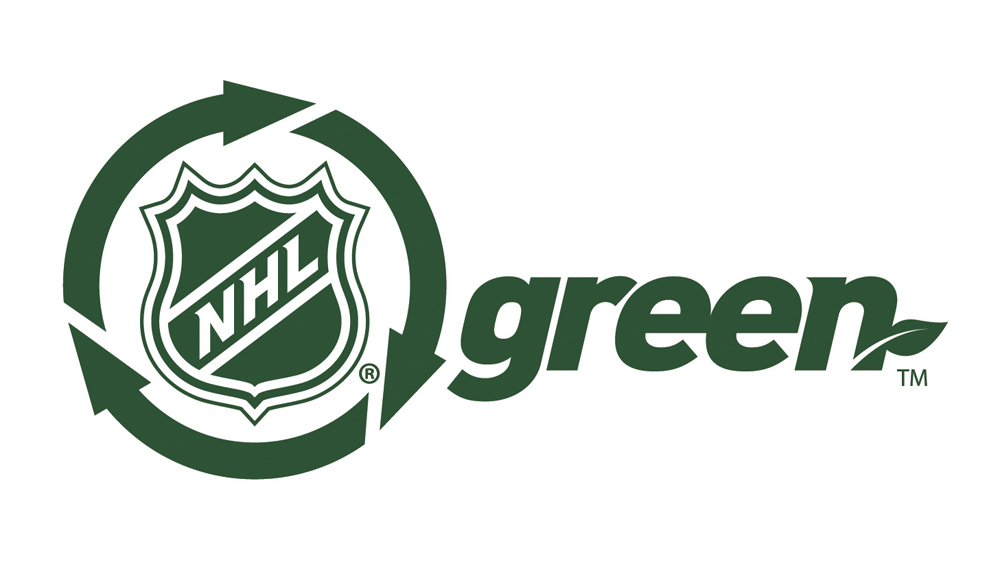#NHLPeachy #EarthyPeachy #NHLGreen NHL Releases 2018 Sustainability Report Focused on Increasing Access to Hockey for Next 100 Years Report Highlights ‘Greener Rinks’ and ‘RinkWatch’ Initiatives to Reduce Environmental Impact Across All Levels of Hockey; Youth-Focused Sustainability Activities Also Available on NHL.com/Green

To Peachy, the NHL has always been GREEN because it is a Hartford Whalers color.
***
During its first-ever NHL Green™ month, celebrating an ongoing commitment to environmental sustainability, the National Hockey League today published the 2018 Sustainability Report, the second installment following the first-ever report of its kind in 2014. The 2018 report, available on NHL.com/Green, assesses the League’s environmental impact and its commitment to ensure all levels of hockey – on frozen ponds, community rinks, or in-arena – thrive for future generations.
Highlighted in the report is the NHL Greener Rinks Initiative (NHL.com/GreenerRinks), a League-wide program launched in 2016. With approximately 4,800 indoor ice rinks across North America at an average age of 30 years, the initiative measures and evaluates their environmental impact. Modern-day NHL arenas use more environmentally-friendly energy sources, including solar power, fuel cell technology, waste water recapture and reuse, and geothermal technologies. The NHL Greener Rinks Initiative aims to help rink operators make similar, sustainable business decisions in their aging community rinks while also reducing energy and operating costs to keep more rinks operational and increase access to the game.
The report also highlights RinkWatch, a research initiative launched in 2013 by two professors from Wilfred Laurier University. The program brings together participants from across North America who share a love for outdoor hockey. Participants are asked to track and monitor backyard rinks, ponds, and winter weather conditions to assist with the study of long-term impacts of climate change. To date, more than 1,400 outdoor rinks and ponds have been tracked and monitored. Fans are encouraged to participate; those interested can visit RinkWatch.org to join the movement.
A microsite featuring highlights from the 2018 Sustainability Report also is available on NHL.com/Green. In partnership with the National Environment Education Foundation (NEEF), the microsite includes interactive components focused on engaging youth with sustainability activities, tools, and resources. Educators and families can visit the microsite and learn how to conduct an energy audit of their school or home, calculate their water footprint, or plant a pollinator garden.
The 2018 report follows the pledge made in September’s Declaration of Principles that states: Hockey should be an enjoyable family experience; all stakeholders – organizations, players, parents, siblings, coaches, referees, volunteers and rink operations – play a role in this effort. The full report details the League-wide effort to innovate at NHL arenas, transform the hockey community through environmental collaboration, inspire communities to act, and encourage fans to get involved.
The League-wide results in the report, aligned with NHL Green month celebrations, covers various aspects concerning the environment, including water restoration, landfill reduction, efficient electricity use, sustainable landscaping, and increased recycling. Highlights include:
A waste diversion rate of 32 percent due to composting, improved concessions forecasting, and enhanced waste tracking, with half of NHL arenas currently composting their own waste. The NHL has set a goal to increase this rate to 50 percent within the next five years.
A 1-percent reduction of energy consumption from 1,267,000 mmbtu in FY14 to 1,252,000 mmbtu in FY16 by using more efficient lighting, enhanced building management systems, waste heat recapture technologies, and onsite renewable energy generation.
An approximate 7-percent decrease in water consumption from FY15 to FY16, with continued efforts League-wide to find water-stress solutions including fixture upgrades in arenas, minimizing consumption in water towers, and installation of smart sensors on water irrigation systems.
Throughout the NHL Centennial year, fans donated 4,245 pounds of equipment (more than 2,000 items), including helmets, skates, and pads. This equipment avoids landfills and gets repurposed back into the community.
A 2-percent year-over-year reduction in CO2 emissions from FY14 to FY16 – from 189,503 to 182,355 metric tons – through innovations and efficiencies.
963,200 megawatt hours of energy counterbalanced since 2014 through the investment of renewable energy credits, generated from U.S. wind and Canadian biomass.
Since its launch in 2010, NHL Green has been committed to promoting green business practices across the League as well as preserving the environment, including the frozen ponds that inspired and cultivated the game more than 100 years ago. As part of NHL Green month, all 31 NHL Clubs have continued to lead a variety of sustainability initiatives in their local markets. For more information, visit NHL.com/Green. To join the conversation, use the hashtag #NHLGreen.
###
NHL and the NHL Shield are registered trademarks and NHL Green name and logo are trademarks of the National Hockey League. © NHL 2018. All Rights Reserved.



























































































